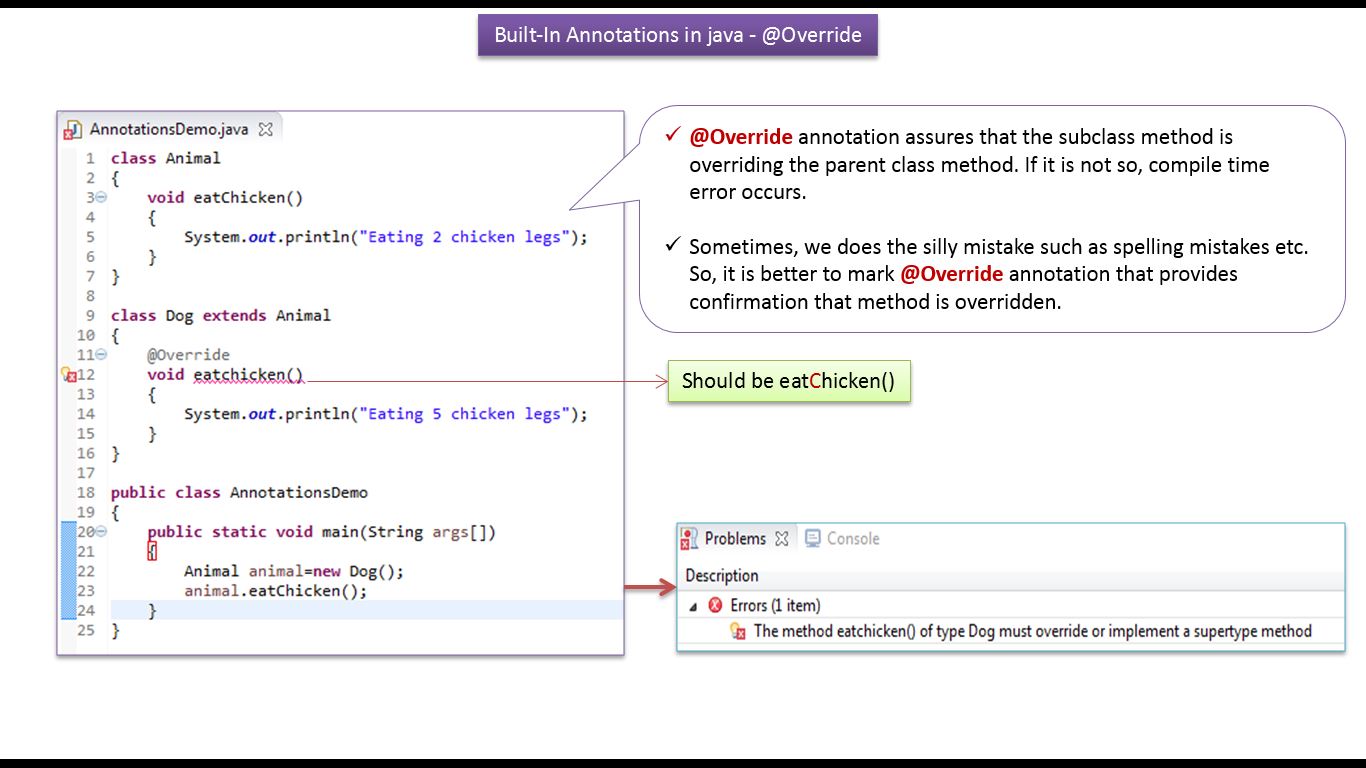

Custom annotations are annotations that are defined by the programmer.They have predefined meanings and are used for various purposes in Java frameworks and libraries. Built-in annotations: Built-in annotations are annotations that are provided by the Java platform.

There are two types of annotations in Java: are passed through as normal JPA properties (with the prefix stripped) when the local EntityManagerFactory is created. They provide additional information about the program to the compiler, but they do not affect the execution of the compiled program. spring: jpa: properties: faultschema: yourscheme. Import are a form of metadata that can be added to Java source code. The controller is the way the client interacts with the application. The schemas may not be hardcoded in an annotation attribute as it depends on the environment (Dev/Acc/Prd).The Entity is kept private so that transparency can be maintained to secure the application. Realm Database treats fields marked with the PrimaryKey annotation as primary keys for their corresponding object schema. The DTOs are the objects which are used to carry information between the database and the client.Well be focusing on the plugins available for two of the most popular IDEs: IntelliJ IDEA and Eclipse. In the previous examples, Override and SuppressWarnings are predefined Java annotations. The annotation type can be one of the types that are defined in the java.lang or packages of the Java SE API. For more information, see Repeating Annotations. The Student is an entity that is interlinked with the database and will be inserted or retrieved from the database according to the desired operation performed by the client. In this tutorial, well have a look at some supporting tools for JPA. Repeating annotations are supported as of the Java SE 8 release.Create a MyDatabase.java file and annotate your class with the Database. Following is the configuration setting of the project written in the application.properties file, all the database connection-related settings, and ORM settings are configured. If you skip this step, you may see .structure.Loading Parquet data does not support flexible column names by default.
Java annotations database schema code#
Here is a diagram of the project flow and the parts of the code that are relevant: Note that columnname annotations always take precedence over placeholder names. In this file, the database initialization setting is configured, and the schema.sql and data.sql scripts are run. The project works like this: when the Spring Boot application starts, it reads the settings from the application.properties file. DataAnnotations.Schema namespace includes the following attributes that impacts the schema of the database. If the current perspective is not JPA perspective then switch to JPA perspective. OEPE will generate Java classes with the appropriate accessors and JPA annotations. Let’s use a demonstration project where the database is set up. In this step, we will use OEPE to automatically generate JPA entity beans from an existing database schema by reverse engineering the schema. Note: If Hibernate or JPA is being used for handling data entities in the database, set the -auto value to none. By default, Spring Boot picks the schema.sql or data.sql on the startup of the application.

For the Spring Boot application to initialize relational databases like MySql, PostgreSql we use need to define the following property in the application.properties file: -mode = alwaysįor Embedded Databases like H2, HSQL Spring Boot automatically creates the schema (Data Definition Language Script) and initializes it (Data Manipulation Language Script). Spring Boot application starts and reads the application.properties file, and from there, the configuration settings are done. Final Words: Database Initialization Flow: It only has meaning in the SchemaTool schema generation.


 0 kommentar(er)
0 kommentar(er)
